Take advantage of this comprehensive nursing care plan and management guide to effectively provide care for clients with unstable blood glucose levels, whether they are experiencing hyperglycemia or hypoglycemia. This guide will equip you with valuable knowledge about conducting thorough nursing assessments, implementing evidence-based nursing interventions, establishing appropriate goals, and identifying nursing diagnoses associated with unstable blood glucose levels.
What is Unstable Blood Glucose Levels?
Unstable Blood Glucose Levels is a refers to a condition where a patient experiences variations in blood glucose levels that deviate from normal, controlled ranges. This can manifest as hyperglycemia (high blood sugar) or hypoglycemia (low blood sugar), and it reflects an inability to maintain a steady state of blood glucose.
There are various types of sugars, with glucose being the primary form our body uses. Other sugars we consume, such as fructose from fruit or lactose from milk, are converted into glucose and used for energy. Starches, which are chains of sugars, are also broken down into glucose. Serum glucose travels from the intestines or liver to body cells through the bloodstream and is absorbed by cells with the help of insulin, a hormone produced by the pancreas. Insulin is secreted by the beta cells in the islets of Langerhans when blood glucose levels rise, facilitating glucose entry into cells for metabolic use. Conversely, the alpha cells in the islets of Langerhans release glucagon when blood glucose levels drop.
Hyperglycemia
Hyperglycemia or elevated blood glucose levels may occur in a variety of clinical situations. Hyperglycemia occurs when blood glucose is greater than 125 mg/dL while fasting and greater than 180 mg/dL 2 hours postprandial (after meals). Diabetes mellitus is the most common disorder associated with elevated blood glucose levels. Certain drugs have hyperglycemia as a side effect. Factors contributing to hyperglycemia include reduced insulin secretion, decreased glucose utilization, and increased glucose production (Mouri & Badireddy, 2023).
Diabetic Ketoacidosis (DKA)
Diabetic ketoacidosis (DKA) is an acute, major, life-threatening complication of diabetes characterized by hyperglycemia, ketoacidosis, and ketonuria. It occurs when absolute or relative insulin deficiency inhibits the ability of glucose to enter cells for utilization as a metabolic fuel, which results in the liver rapidly breaking down fats into ketones to serve as a fuel source instead. The overproduction of ketones occurs, causing them to accumulate in the blood and urine and turn the blood acidic.
Hyperosmolar Hyperglycemic State (HHS)
Hyperosmolar hyperglycemic state (HHS) is one of the two serious metabolic derangements that occur in clients with diabetes mellitus. It is a life-threatening emergency that although less common than diabetic ketoacidosis, has a much higher mortality rate. It is characterized by hyperglycemia, hyperosmolality, and dehydration without significant ketoacidosis. Insulin remains available in amounts sufficient to inhibit lipolysis and ketogenesis but insufficient to prevent hyperglycemia (Avichal & Griffing, 2023).
Hypoglycemia
Hypoglycemia, otherwise, occurs most often as the result of excess insulin administration in the person with diabetes mellitus. It may also occur in a person who has excessive alcohol intake, prolonged fasting, starvation states, adrenal insufficiency, and eating disorders such as anorexia nervosa. Low blood glucose levels after meals may be linked to gastric bypass surgery or excess consumption of refined carbohydrates and are the result of increased insulin production. The glucose level at which an individual becomes symptomatic is highly variable, although a plasma glucose level of less than 50 mg/dL is generally considered the threshold.
To diagnose hypoglycemia, the Whipple triad must be present. This triad includes the documentation of low blood sugar, the presence of symptoms, and the reversal of these symptoms when the blood sugar level is restored to normal (Hamdy & Khardori, 2023).
An important part of managing blood glucose levels, as well as the overall health of a person, is maintaining a healthy weight through a healthy diet and exercise plan.
Common Causes
Here are some factors or conditions that may lead put clients at risk for unstable blood glucose:
- Lack of knowledge of diabetes management or blood glucose management
- Developmental level
- Imbalance of activity
- Inadequate blood glucose monitoring
- Insulin deficiency or excess
- Nonadherence to the therapeutic regimen for diabetes
- Obesity or overweight (more than 20% of desired body weight)
- Family history of type 2 diabetes
Nursing Care Plans and Management
Nursing care plans allow healthcare professionals to tailor interventions and treatments to individual clients, addressing their specific needs and circumstances effectively. Developing a nursing care plan involves a thorough assessment of the client’s medical history, current health status, lifestyle, and potential risk factors. Care plans outline specific monitoring parameters, including blood glucose levels, vital signs, and other relevant indicators. This facilitates effective communication and coordination among healthcare professionals.
Nursing Problem Priorities
The following are the nursing priorities for clients with unstable blood glucose levels:
- Risk for hypoglycemia. Hypoglycemia can be life-threatening if left untreated. Nursing interventions should focus on preventing hypoglycemic episodes through regular blood glucose monitoring, ensuring timely administration of insulin or oral hypoglycemic agents, and educating the client and the family about the signs and symptoms of hypoglycemia.
- Risk for hyperglycemia. Hyperglycemia can lead to complications such as DKA or HHS. The nurse should closely monitor blood glucose levels, administer prescribed medications as scheduled, and educate the client and family on proper diet and medication adherence to prevent hyperglycemic episodes.
- Ineffective self-management. Clients with unstable blood glucose levels may struggle with managing their condition effectively. The nurse should address barriers to self-management and provide support and resources that can enhance the client’s ability to control their blood glucose levels.
- Inadequate nutrition. Proper nutrition is necessary for managing blood glucose levels. Clients may face challenges in adhering to a balanced diet. The nurse can assist the client in creating an individual meal plan and collaborate with dietitians to ensure the client receives appropriate nutrition.
- Foot complications. Uncontrolled blood glucose levels can lead to peripheral neuropathy and vascular issues, increasing the risk of foot ulcers and infections. The nurse should conduct regular foot assessments and provide education on foot care.
Nursing Assessment
Assessment is important to identify potential problems that may have led to changes in blood glucose levels as well as handle any conflict that may appear during nursing care. A comprehensive evaluation enables the nurse to identify factors contributing to the instability of blood glucose levels, facilitating targeted interventions.
Assess for the following subjective and objective data:
Hypoglycemia
- Sweating
- Tremors
- Tachycardia
- Palpitation
- Nervousness
- Hunger
- Inability to concentrate
- Headache or lightheadedness
- Confusion’memory lapses
- Numbness of lips and tongue
- Slurred speech
- Impaired coordination
- Emotional changes
- Irrational or combative behavior
- Double vision
- Drowsiness
- Disoriented behavior
- Seizures difficulty arousing from sleep
- Loss of consciousness
Hyperglycemia
- Polyuria
- Polydipsia
- Weight loss
- Lethargy
- Focal neurologic deficits
- Altered mental status
- Nausea and vomiting
- Abdominal pain
- Fruity odor to the breath
- Rapid, shallow respirations
- Hypotension
- Tachycardia
- Dry mucous membranes
Nursing Diagnosis
Following a thorough assessment, a nursing diagnosis is formulated to specifically address the challenges associated with unstable blood glucose levels based on the nurse’s clinical judgement and understanding of the patient’s unique health condition. While nursing diagnoses serve as a framework for organizing care, their usefulness may vary in different clinical situations. In real-life clinical settings, it is important to note that the use of specific nursing diagnostic labels may not be as prominent or commonly utilized as other components of the care plan. It is ultimately the nurse’s clinical expertise and judgment that shape the care plan to meet the unique needs of each patient, prioritizing their health concerns and priorities. However, here are some example nursing diagnosis:
- Risk for Unstable Blood Glucose as evidenced by inadequate adherence to therapeutic regimen
- Risk for Unstable Blood Glucose as evidenced by decreased coping mechanisms.
Nursing Goals
The following are the common goals and expected outcomes:
- The client maintains a blood glucose reading of less than 180 mg/dL; fasting blood glucose levels of less than <140 mg/dL; and a hemoglobin A1C level of <7%.
- The client acknowledges factors that lead to unstable blood glucose levels.
- The client will verbalize understanding of body and energy needs.
- The client will verbalize a plan for modifying factors to prevent or minimize complications.
Nursing Interventions and Actions
The following are the therapeutic nursing interventions for clients with unstable blood glucose levels (hyperglycemia and hypoglycemia):
See also: 20 Diabetes Mellitus Nursing Care Plans for more comprehensive nursing interventions and actions
1. Monitoring and Assessing Unstable Blood Glucose Levels
In addition to the assessment and diagnostic procedures performed to diagnose unstable blood glucose levels, ongoing specialized assessment of clients with known diabetes and evaluation of complications in clients with newly diagnosed diabetes are important components of care.
Assessing for hypoglycemia
Assess for signs of hypoglycemia.
Manifestations of hypoglycemia may depend on every individual but are consistent in the same individual. The signs are the result of both increased adrenergic activity and decreased glucose delivery to the brain. The client may experience tachycardia, diaphoresis, tremors, dizziness, headache, fatigue, hunger, and visual changes.
Monitor hypoglycemic episodes closely in clients with new-onset diabetes.
Careful consideration should be given to all diabetic clients presenting with hypoglycemia. New medications, activity changes, and infection should be considered. Early in the course of non-insulin-dependent diabetes, clients may experience episodes of hypoglycemia several hours after meals. The symptoms are generally brief and respond spontaneously.
Assess for anxiety, tremors, and slurring of speech.
Signs of CNS dysfunction occur when the client has moderate hypoglycemia. The drop in blood glucose level deprives the brain cells of the needed fuel for functioning. Other symptoms include inability to concentrate, headache, lightheadedness, confusion, or irrational behavior. Tremors can occur earlier as a result of mild hypoglycemia, wherein the sympathetic nervous system is stimulated as the blood glucose level falls.
Monitor serum insulin levels.
Hyperinsulinemia occurs early in the development of type 2 diabetes. Obesity and insulin receptor dysfunction in peripheral tissues stimulate insulin secretion from the pancreas. Insulinomas and some extrapancreatic tumors cause increased insulin levels and contribute to hypoglycemia.
Observe for altered mental status.
In severe hypoglycemia, CNS function is so impaired that the client needs the assistance of another person for the treatment of hypoglycemia. Symptoms may include disoriented behavior, seizures, difficulty arousing from sleep, or loss of consciousness.
Monitor blood glucose levels and accompanying symptoms.
It is important to check the client’s blood glucose level and correlate it with the client’s symptoms. If the client’s blood glucose level is low, but they are not exhibiting any symptoms, the nurse should double-check the glucose level to ensure that it is correct. Decreased hormonal response to hypoglycemia may contribute to a lack of symptoms of hypoglycemia.
Determine the client’s usual meal times in relation to the onset of symptoms.
The timing of the onset of symptoms relative to the time of meal ingestion is crucial in the evaluation of a client with hypoglycemia. Fasting hypoglycemia typically occurs in the morning before eating and during the day, particularly in the afternoon if meals are missed or delayed.
Monitor for postprandial hypoglycemia.
Postprandial hypoglycemia occurs 2 to 4 hours after eating food, especially when meals contain high levels of simple carbohydrates. Postprandial symptoms are due to reactive causes. About 4 to 6 hours after food ingestion, plasma glucose concentrations are 80 to 90 mg/dL, and rates of glucose utilization and production are approximately 2 mg/kg/minute.
Assess a pregnant client’s blood glucose levels strictly.
In a study of maternal hypoglycemia, it was found that hypoglycemia occurred more frequently in women younger than 25 years and those who had preexisting medical conditions.
Assess the client’s skin, eyes, ears, nose, and throat (HEENT).
The client’s skin may be diaphoretic and warm or show signs of dehydration with a decrease in turgor. The head, eyes, ears, nose, and throat examination may reveal blurred vision, pupils normal to fixed and dilated, icterus, and parotid pain due to endocrine causes.
Monitor for the presence of an infection.
Studies should be considered to rule out the possibility of a concurrent occult infection contributing to a new hypoglycemic episode. This can be done through a complete physical examination, chest radiography, urinalysis, and blood cultures.
Perform oral glucose tolerance tests.
Administer an oral glucose tolerance test if reactive hypoglycemia is suspected. Perform the test for five hours while simultaneously testing glucose and insulin levels. A low blood sugar (<50 mg/dL) during the test should be accompanied by typical symptoms of hypoglycemia.
Monitor laboratory test results as indicated.
Check liver function tests, serum insulin levels, and cortisol and thyroid levels. Proinsulin normally represents less than 20% of total immunoreactive insulin; in clients with islet-cell tumors, proinsulin may contribute as much as 70% of insulin immunoreactivity.
Assessing for hyperglycemia
Assess for signs of hyperglycemia.
Hyperglycemia results when there is an inadequate amount of insulin to glucose. Excess glucose in the blood creates an osmotic effect that results in increased thirst (polydipsia), hunger (polyphagia), and increased urination (polyuria). The client may also report nonspecific symptoms of fatigue, tingling or numbness of the hands and feet, and blurred vision.
Obtain blood glucose levels according to the criteria for diagnosis of diabetes.
An abnormally high blood glucose level is the basic criterion for the diagnosis of diabetes. Fasting plasma glucose, random plasma glucose, and glucose level two hours after receiving glucose may be used. The criteria for the diagnosis of diabetes include:
- Symptoms of diabetes (polyuria, polydipsia, unexplained weight loss) plus casual plasma glucose concentration(taken any time of the day without regard to time since the last meal) equal to or greater than 200 mg/dL (11.1 mmol/L).
Or
- Fasting (no caloric intake for at least 8 hours) plasma glucose greater than or equal to 126 mg/dL (7.0 mmol/L).
Or
- Two-hour post-load glucose equal to or greater than 200 mg/dL (11.1 mmol/L) during an oral glucose tolerance test.
Or
- An AIC>6.5% (48 mmol/mol)
Monitor the client’s vital signs.
Measurement of the pulse is important, in that relative tachycardia is a typical finding in autonomic neuropathy, often preceding the development of orthostatic hypotension. If the respiratory rate and pattern suggest Kussmaul respiration, DKA must be considered immediately.
Assess for morning hyperglycemia.
Elevated blood glucose on arising in the morning is caused by an insufficient level of insulin.
Monitor the client’s urine output.
In an attempt to rid the body of excess glucose, the kidneys excrete glucose along with water and electrolytes. This osmotic diuresis, which is characterized by excessive urination or polyuria, leads to dehydration and marked electrolyte loss.
Assess the client’s current knowledge and understanding of the prescribed diet.
An individualized diet plan is recommended. Certain aspects of meal planning, such as the food exchange system, may be difficult to learn. This may be related to limitations in the client’s intellectual level or to emotional issues, such as difficulty accepting the diagnosis of diabetes or feelings of deprivation and undue restriction in eating.
Assess eating patterns.
Nonadherence to dietary guidelines for a specific clinical condition can result in fluctuations in blood glucose. The first step in educating the client about nutritional therapy is a thorough review of the client’s dietary history to identify eating habits and lifestyle and cultural eating patterns.
Assess feet for temperature, pulses, color, and sensation.
This is to monitor peripheral perfusion and neuropathy. Atherosclerotic changes in the large blood vessels of the lower extremities are responsible for the increased incidence of occlusive peripheral arterial disease in clients with diabetes. Signs and symptoms of peripheral vascular disease include diminished peripheral pulses and intermittent claudication (pain in the buttock, thigh, or calf during walking).
Assess for orthostatic hypotension.
Clients with established diabetes and autonomic neuropathy may have orthostatic hypotension. Clients with marked intravascular volume depletion may have orthostatic hypotension or a drop in systolic blood pressure of 20 mm Hg or more on changing from a reclining to a standing position. Orthostatic vital signs may be useful in assessing volume status and in suggesting the presence of autonomic neuropathy.
Observe the client’s breathing for a fruity odor and hyperventilation.
The ketosis and acidosis of DKA may lead to an acetone breath or a fruity odor of the breath, which occurs with elevated ketone levels. Hyperventilation, with very deep, but not labored respirations, may occur. These Kussmaul respirations represent the body’s attempt to decrease acidosis, counteracting the effect of the ketone build-up.
Monitor the client’s ABG levels.
Evidence of ketoacidosis is reflected in low serum bicarbonate (0 to 15 mEq/L) and low pH (6.8 to 7.3) values. The low partial pressure of carbon dioxide (PCO2 10 to 30 mm Hg) reflects respiratory compensation for metabolic acidosis.
Perform a fundoscopic examination as appropriate.
Because the diagnosis of type 2 diabetes often is delayed, 20% of clients have some degree of retinopathy at diagnosis. The client may not notice a change in visual acuity unless the center of the macula is involved. Macular edema can cause visual loss; therefore, all clients with suspected macular edema must be referred to an ophthalmologist for evaluation.
Check the client’s feet regularly.
The dorsalis pedis and posterior tibialis pulses should be palpitated and their presence or absence noted. Poor lower extremity blood flow can delay healing and increase the risk of amputation. Decreased sensation limits the client’s ability to protect the feet and ankles.
Screen a pregnant woman for unstable blood glucose levels during their prenatal visit.
Women who are considered to be at high risk for gestational diabetes and should be screened by blood glucose testing at their first prenatal visit are those with marked obesity, a personal history of gestational diabetes, glycosuria, or a strong family history of diabetes. Women who are considered high-risk or average-risk should have either an oral glucose tolerance test (OGTT) or a glucose challenge test (GCT) followed by OGTT in women who exceed the glucose threshold value of 140 mg/dL (7.8 mmol/L).
Self-monitoring of blood glucose
Assess the client’s preference for blood glucose monitoring equipment.
Various methods of self-monitoring of blood glucose (SMBG) are available. Most involve obtaining a drop of blood from the fingertip, applying the blood to a special reagent strip, and allowing the blood to stay on the strip for the amount of time specified. The meters available for SMBG offer various features and benefits such as monthly averages, tracking of events such as exercise and food consumption, and downloading capacity.
Determine the client’s ability to self-monitor their blood glucose levels.
Methods for SMBG must match the skill level and physical capabilities of the client. Factors that affect SMBG performance may include visual acuity, fine motor coordination, cognitive ability, comfort with technology and willingness to use it, and cost. Some meters can be used by clients with visual impairments; these meters have audio components to assist in performing the test and obtaining the results.
Evaluate the client’s techniques in SMBG regularly.
It is also equally important for the nurse to evaluate the techniques of clients who are experienced in self-monitoring. Every 6 to 12 months. Clients would conduct a comparison of their meter results with a simultaneous laboratory-measured blood glucose level in the clinic and have their technique observed.
Assess the function and accuracy of the blood glucose meters and strips.
The accuracy of the meter and strips can also be assessed with control solutions specific to that meter whenever a new vial of strips is used and whenever the validity of the reading is in doubt.
Identify clients who are candidates for self-monitoring.
SMBG is a useful tool for managing self-care for everyone with diabetes. For clients who are not taking insulin, SMBG is helpful for monitoring the effectiveness of exercise, diet, and oral antidiabetic agents. For clients with type 2 diabetes, SMBG is recommended during periods of suspected hyperglycemia or hypoglycemia, and when medication or dosage is modified. SMBG is also recommended for the following conditions:
- Clients with unstable diabetes who have severe swings from very high to very low blood glucose levels within a 24-hour day
- Clients who have a tendency to develop severe ketosis or hypoglycemia
- Clients who have hypoglycemia without warning symptoms
Identify risk factors and potential causes
Obtain the client’s family history.
Clients do not inherit type 1 diabetes itself but rather a genetic predisposition, or tendency, toward the development of type 1 diabetes. This genetic tendency has been found in people with certain human leukocyte antigen types.
Weigh the client upon visit and then regularly.
Type 2 diabetes occurs commonly in clients who are older than 30 years and obese. The body mass index (BMI) at which excess weight increases the risk for diabetes varies with different racial groups. Approximately 90% of clients with type 2 diabetes are overweight or have obesity.
Monitor blood glucose levels as fasting and postprandial levels.
Normal fasting blood glucose for an adult is 70 to 105 mg/dL. Critical values for hypoglycemia are less than 40 to 50 mg/dL. Critical values for hyperglycemia are greater than 400 mg/dL. Clients receiving total parenteral nutrition (TPN) may have a higher than normal blood glucose value because the solution contains up to 50% dextrose. Clients with reactive hypoglycemia will have a blood glucose level less than normal after eating.
Assess blood glucose levels before meals and at bedtime.
Blood glucose should be between 140 to 180 mg/dL. Non-intensive care clients should be maintained at pre-meal levels <140 mg/dL. Appropriate timing of blood glucose checks, meal consumption, and insulin dose are all crucial for glucose control and to avoid hypoglycemia.
Assess medications taken regularly.
A lot of drugs can cause fluctuations in blood glucose as a side effect. Beta-blockers, corticosteroids, thiazide diuretics, estrogen, isoniazid, lithium, and phenytoin can cause hyperglycemia. Regular use of salicylates, disopyramide, insulin, sulfonylurea agents, and pentamidine can cause hypoglycemia. If poor glucose control or preventable complications occur, the nurse needs to assess the reasons for the client’s ineffective management of the treatment regimen.
Assess the pattern of physical activity.
Physical activity helps lower blood glucose levels. Regular exercise is a core part of diabetes management and reduces the risk of cardiovascular complications. Clients who have blood glucose levels exceeding 250 mg/dL (14 mmol/L) and who have ketones in their urine should not begin exercising until the urine test results are negative for ketones and the blood glucose level is closer to normal. This is because exercising with elevated blood glucose levels increases the secretion of glucagon, resulting in the liver releasing more glucose, subsequently increasing the blood glucose levels even more.
Assess alcohol intake.
Excessive alcohol consumption, without food intake, blocks the release of glycogen from the liver, causing hypoglycemia. Alcohol is absorbed before other nutrients and does not require insulin for absorption. Large amounts can be converted to fats, increasing the risk of DKA.
Determine if the client has a history of mental health disorders.
Accumulating evidence suggests that depression is a significant risk factor for developing type 2 diabetes. Antidepressants may be a marker of more severe, chronic, or recurrent depression, and antidepressant use itself may increase diabetes risk, possibly altering glucose homeostasis or promoting weight gain. Schizophrenia has also been linked to the risk for type 2 diabetes because acquired protein kinase defects are associated with impaired regulation of blood glucose and diabetes.
Monitor a pregnant woman’s blood pressure for pre-eclampsia.
A study showed that the incidence rate of diabetes with preeclampsia is significantly high. The risk was further elevated in women with pre-eclampsia or gestational hypertension comorbid with gestational diabetes. Gestational diabetes is any degree of glucose intolerance with its onset during pregnancy. Hyperglycemia develops because of the secretion of placental hormones, which causes insulin resistance.
2. Provide Interventions to Decrease Blood Glucose Levels (Hyperglycemia)
The treatment goals of hyperglycemia involve eliminating the symptoms related to hyperglycemia and reducing long-term complications.
Report BP of more than 160 mm Hg (systolic).
Hypertension is commonly associated with diabetes. Control of BP prevents coronary artery disease, stroke, retinopathy, and nephropathy. In many cases, blood pressure measurement will disclose hypertension, which is particularly common in clients with diabetes (Khardori & Griffing, 2023).
Use a continuous glucose monitoring system.
A continuous glucose monitoring system (CGMS) can be used to monitor blood glucose levels. A sensor is attached to an infusion set, which is similar to an insulin pump infusion set, is inserted subcutaneously in the abdomen and connected to the device worn on the client’s clothing or placed in a pocket. This can be sued to determine whether the treatment is adequate over a 24-hour period.
Test the client for glycated hemoglobin.
Glycated hemoglobin (glycosylated hemoglobin/HgbA1C or A1C) is a measure of glucose control for the past 3 months. When blood glucose levels are elevated, glucose molecules attach to hemoglobin in RBCs. Normal typical values range from 4% to 6% and indicate consistently near-normal blood glucose concentrations.
Test the client for ketones.
Ketones are by-products of fat breakdown, and they accumulate in the blood and urine. Ketones in the urine indicate insulin deficiency and control of type 1 diabetes is deteriorating. A urine dipstick may be used to detect ketonuria, and this may be done whenever clients with type 1 diabetes have glycosuria or persistently elevated blood glucose levels, during illness, in pregnancy with preexisting diabetes, and in gestational diabetes.
Encourage the client to engage in a lifestyle management program for weight loss.
All overweight and obese clients with diabetes should be advised of the health benefits of weight loss and encouraged to engage in a program of intensive lifestyle management. The Action for Health in Diabetes randomized 5,145 overweight or obese clients with type 2 diabetes to an intensive lifestyle program that promoted energy restriction, incorporating meal replacements to induce and sustain weight loss, along with increased physical activity compared with standard diabetes education and support. Weight loss was at 6% at the end of the study (Davies et al., 2018).
Promote regular physical activity.
Aerobic exercise, resistance training, and a combination of the two are effective in reducing HbA1C by about 6.6 mmol/mol. Special consideration must be given to clients with CVD, uncontrolled retinopathy or nephropathy, and severe neuropathy. A wide range of physical activities, including leisure time activities (walking, swimming, gardening, jogging, tai chi, and yoga) can significantly reduce HbA1C.
Administer hypertensive as prescribed.
The ADA recommends a blood pressure target of <130/80 mm Hg for clients with high cardiovascular risk. It is recommended to use angiotensin-converting enzymes (ACEI) or angiotensin II receptor blockers (ARBs) for clients with albuminuria, to reduce kidney disease progression, regardless of blood pressure levels (de Sa et al., 2022).
Administer oral antidiabetic agents as indicated.
Oral antidiabetic agents may be effective for clients with type 2 diabetes who cannot be treated effectively with exercise and medical nutritional therapy (MNT) alone. These agents are prescribed as an addition, not a substitute, to other treatment modalities, such as MNT and exercise.
Refer the client to certified diabetes nurse educators.
Many health systems employ nurses who specialize in diabetes education and management and who are certified by the National Certification Board for Diabetes Educators as certified diabetes educators. However, all nurses play a vital role in identifying clients with diabetes, assessing self-care skills, providing basic education, reinforcing education provided by the nurse specialist, and referring clients for follow-up care.
Insulin therapy
Prepare the appropriate type of insulin.
A number of insulin preparations are available. They vary according to three main characteristics: time course of action, species, and manufacturer.
- Rapid-acting insulin
These produce a more rapid effect with a shorter duration than regular insulin. Instruct the client to eat 5 to 15 minutes after injection. - Short-acting insulin or regular insulin
These are marked R on the bottle. Regular insulin is a clear solution and is given 15 minutes before a meal, alone or in combination with longer-acting insulin. - Intermediate-acting insulin or NPH insulin (neutral protamine Hagedorn)
This is also referred to as Lente insulin, which appears white and cloudy. The client should eat some food around the time of onset and peak of these insulins, but it is unnecessary to take it before a meal. - Very long-acting insulin or “peakless” basal insulin
This insulin is absorbed very slowly over 24 hours and can be given once a day at the same time each day to prevent overlap of action.
Allow client to choose their insulin regimen with supervision from their healthcare provider.
The client should be very involved in the decision regarding which insulin regimen to use. The client should compare the potential benefits of different regimens with the potential costs. The nurse plays an important role in educating the client about the various approaches to insulin therapy.
- Conventional regimen
With this type of simplified regimen, which consists of one or more injections of a mixture of short- and intermediate-acting insulins per day, the client should not vary meal patterns and activity levels. This regimen is indicated for the terminally ill, older adults with limited self-care abilities, or clients who are unwilling or unable to self-manage. - Intensive regimen
A more complex insulin regimen allows the client more flexibility to change insulin doses from day to day in accordance with changes in eating and activity patterns, with stress and illness, and as needed. The intensive regimen requires 3 or 4 injections of insulin per day, increasing the risk of hypoglycemia three-fold.
Administer basal and preprandial insulin.
Adherence to the therapeutic regimen promotes tissue perfusion. Keeping glucose in the normal range slows the progression of microvascular disease. Basal insulin is necessary to maintain blood glucose levels irrespective of meals. Insulin replacement is accomplished by giving basal insulin and preprandial insulin. The basal insulin is either long-acting or intermediate-acting. The preprandial insulin is either rapid-acting or short-acting.
Administer insulin medications as directed.
Insulin is required to lower blood glucose levels in type 1 diabetes and for many clients with type 2 diabetes. Clients receiving TPN may require insulin to maintain stable blood glucose in response to high dextrose concentration in the solution. In type 1 diabetes, exogenous insulin must be given for life because the body loses the ability to produce insulin. In type 2 diabetes, insulin may be necessary on a long-term basis to control glucose levels if meal planning and oral agents are ineffective or when insulin deficiency occurs.
3. Provide Interventions to Improve Blood Glucose Levels (Hypoglycemia)
Clients with diabetes with episodes of hypoglycemia need education in nutrition, checking glucose levels at home, and early signs and symptoms of hypoglycemia. Recognition of early symptoms is paramount for self-treatment.
Provide food or other sources of glucose as directed for hypoglycemia.
A rapidly absorbed form of glucose is indicated to manage hypoglycemia. These forms of glucose may include oral intake of hard candy or fruit juice. For the client who cannot take something orally, an intravenous injection of glucose may be indicated. If the client has a hypoglycemic reaction and does not have any of the recommended emergency foods available, they should eat any available food, preferably carbohydrate food.
Avoid adding sugar to the client’s food and beverages.
It is not necessary to add sugar to juice, even if it is labeled as unsweetened juice, because the fruit sugar in juice contains enough carbohydrates to raise the blood glucose level. Adding table sugar to juice may cause a sharp increase in the blood glucose level, and the client may experience hyperglycemia for hours after treatment.
Advise the client to avoid eating high-calorie, high-fat foods.
Clients must be instructed to avoid eating high-calorie, high-fat foods, such as cookies, cakes, ice cream, and doughnuts, to treat hypoglycemia. The high-fat content of these foods may slow the absorption of glucose and the resolution of the hypoglycemic symptoms.
Restrict the client’s intake of carbohydrates.
Clients with reactive hypoglycemia require a restriction of refined carbohydrates. The client should avoid simple sugars, increase the frequency of their meals, and reduce the size of their meals. The client may require 6 small meals and 2 to 3 snacks per day, with the addition of protein and fiber in these meals.
Instruct the client to avoid intense, strenuous activities.
Exercise burns carbohydrates and increases sensitivity to insulin, therefore, clients with fasting hypoglycemia should avoid significant activity. The client may start a routine exercise program as tolerated because some clients with reactive hypoglycemia experience improved symptoms after the program.
Obtain C-peptide levels as appropriate.
The nurse may check for C-peptide levels if available at any time an elevated insulin level is obtained. Exogenous hyperinsulinemia from injected insulin results in low concentrations of C-peptide, both because of the effect of the associated hypoglycemia and because of the direct suppressive effect of insulin on the pancreatic beta cell.
Treat hypoglycemia with 50% dextrose.
Clients who cannot swallow or are unconscious can be given 25 to 50 mL of dextrose 50% in water (D50W) intravenously. The effect is usually seen within minutes. Inform the client that they may feel a headache and pain at the injection site. The nurse should ensure the patency of the IV line used for the injection of 50% dextrose because hypertonic solutions can be very irritating to the veins.
Administer glucagon subcutaneously as indicated.
In emergency situations, for adults who are unconscious and cannot swallow, an injection of glucagon 1 mg can be given subcutaneously. Glucagon is a hormone produced by the alpha cells of the pancreas that stimulates the liver to break down glycogen, the stored glucose. After the injection of glucagon, the client may take as long s 20 minutes to regain consciousness. Turn the client to the side because glucagon may cause nausea, which puts the client at risk for aspiration.
Administer insulin secretion inhibitors as prescribed.
These agents that inhibit insulin secretion increase glucose levels by reducing peripheral glucose metabolism. Diazoxide increases hepatic glucose output by inhibiting pancreatic insulin release. Octreotide inhibits insulin secretion and growth hormone secretion, as well as inhibits glucagon.
4. Managing Complications of Hyperglycemia (DKA and HHS)
The major goals for a client who developed complications from hyperglycemia include maintenance of fluid and electrolyte balance, increased knowledge about diabetes basic skills and self-care, decreased anxiety, and absence of complications.
Monitor the blood glucose and ketone levels.
Blood glucose levels may vary between 300 and 800 mg/dL (16.6 and 44.4 mmol/L). Accumulation of ketone bodies is reflected in blood and urine ketone measurements.
Monitor serum potassium levels closely.
Serum potassium levels must be monitored frequently. The initial plasma concentration of potassium may be low, normal, or, high, but more often than not, tends to be high. Rehydration also leads to increased urinary excretion of potassium, and insulin administration causes the movement of potassium from the extracellular fluid into the cells.
Review “sick day rules” with the client.
For prevention of DKA related to illness, “sick day rules” for managing diabetes when ill should be reviewed with the client. The nurse should emphasize that the client should never eliminate insulin doses when nausea and vomiting occur. The client should still take the usual insulin dose and then attempt to consume small, frequent portions of carbohydrates. Drinking fluids every hour is also important to prevent dehydration. Blood glucose and urine ketones must be assessed every 3 to 4 hours.
Encourage the client to increase oral fluid intake.
In clients with DKA or HHS, oral fluid intake is encouraged as part of the treatment plan to help correct dehydration and electrolyte imbalances that occur due to the condition. Excessive urination may cause dehydration and electrolyte imbalances.
Measure intake and output.
Intake and output are measured because hyperglycemia causes osmotic diuresis, which results in loss of water and electrolytes. To maintain osmotic equilibrium, water shifts from the intracellular fluid space to the extracellular fluid space. Additionally, fluid overload can result due to the administration of a large volume of fluid at a rapid rate.
Instruct the client on when to contact their healthcare provider.
If the client cannot take fluids without vomiting, or if elevated glucose or ketone levels persist, the healthcare provider must be contacted. The client must know how to contact their provider 24 hours a day.
Administer intravenous fluids as indicated.
In dehydrated clients, rehydration is important for maintaining tissue perfusion. Fluid replacement enhances the excretion of excessive glucose by the kidneys. Initially, 0.9% sodium chloride solution is given at a rapid rate, usually 0.5 to 1 L per hour for 2 to 3 hours. Half-strength normal saline (0.45%) solution may be given to clients with hypertension or hypernatremia and those at risk for heart failure. When the blood glucose level reaches 300 mg/dL or less, the IV solution may be replaced with dextrose 5% in water.
Administer potassium replacement therapy cautiously. Cautious but timely potassium replacement is vital to avoid dysrhythmias that may occur with hypokalemia. As much as 40 mEq per hour may be needed for several hours. Because extracellular potassium levels decrease during DKA treatment, potassium must be infused even if the plasma potassium level is normal.
Administer regular insulin intravenously.
Insulin is usually infused IV at a slow, continuous rate. IV solutions with higher concentrations of glucose, such as Ns solution, are given when blood glucose levels reach 250 to 300 mg/dL. Insulin must be infused continuously until subcutaneous administration of insulin can be resumed to avoid reaccumulation of ketone bodies and worsening acidosis.
5. Promoting Nutritional Therapy
Nutrition, meal planning, weight control, and increased activity are the foundation of diabetes management. The most important objectives in the dietary management and nutritional management of diabetes are control of total caloric intake to attain or maintain reasonable body weight, control of blood glucose levels, and normalization of lipids and blood pressure to prevent heart disease.
Assist the client in identifying eating patterns that need to be modified.
This information provides the basis for individualized dietary instruction related to the clinical condition that contributes to fluctuation in blood glucose levels. For most clients, the best diet is one consisting of the foods that they are currently eating. The nurse should collaborate with the client and dietitian to create a meal plan composed of foods that are within the financial reach and cultural milieu of the client.
Collaborate with the client in establishing a meal plan.
The meal plan must consider the client’s food preferences, lifestyle, usual eating times, and ethnic and cultural background. Clients who require insulin to help control blood glucose levels should maintain as much consistency as possible in every meal they ingest. Clients who can master the insulin-to-carbohydrate calculations can have a more flexible lifestyle and predictable diabetes control.
Pace the client’s food intake throughout the day.
Clients who are obese may benefit from consistent meal content or timing, but decreasing overall caloric intake is of greater importance. Meals should not be skipped, but they should be paced throughout the day to decrease demands on the pancreas.
Provide foods according to the client’s caloric requirements.
Calorie-controlled diets are planned by first calculating a lenient’s energy needs and caloric requirements based on age, gender, height, and weight. The calories are then distributed into carbohydrates, proteins, and fats, and a meal plan is developed.
- Carbohydrates
The caloric distribution currently recommended is higher in carbohydrates than in fat and protein. Currently, the ADA and the Academy of Nutrition and Dietetics recommend that for all levels of caloric intake, 50% to 60% of calories should be derived from carbohydrates. This consists of sugars (sucrose) and starches, such as rice, bread, or pasta. These must be eaten in moderation to avoid high postprandial blood glucose levels. - Fats
The recommendations regarding the fat content of the diabetic diet include both reducing the total percentage of calories from fat sources to less than 30% of total calories and limiting the amount of saturated fats to 10% of total calories. Dietary cholesterol is also limited to less than 300 mg/day. - Protein
The remaining 10% to 20% is for protein. The meal plan may include the use of some non-animal sources of protein, such as legumes and whole grains, to help reduce saturated fat and cholesterol intake. - Fiber
Increased fiber in the diet may improve blood glucose levels, decrease the need for exogenous insulin, and lower total cholesterol and low-density lipoprotein levels in the blood. The soluble fiber in foods such as legumes, oats, and some fruits, plays a more essential role in lowering blood glucose and lipid levels. Insoluble fiber is found in whole-grain breads and cereals and in some vegetables.
Utilize the exchange list in providing appropriate food groups for the client.
A commonly used tool for nutritional management is the exchange list for meal planning. There are six main exchange lists: bread/starch, vegetable, milk, meat, fruit, and fat. Foods within one group contain equal numbers of calories and are approximately equal in grams of protein, fat, and carbohydrate. Meal plans are based on a recommended number of choices from each exchange list.
Perform carbohydrate counting when planning the client’s meal.
Carbohydrate counting is a nutritional tool used for blood glucose management because carbohydrates are the main nutrients in food that influence blood glucose levels. This method provides flexibility in food choices, can be less complicated to understand than a diabetic food exchange list, and allows more accurate management with multiple daily injections.
Measure the servings or choices of food for every meal.
This method is used more often by people with type 2 diabetes. It is similar to the food exchange list and emphasizes portion control of total servings of carbohydrates at meals and snacks. One carbohydrate serving is equivalent to 15 g of carbohydrate. Examples of one serving are an apple 2 inches in diameter and one slice of bread.
Use the MyPlate food guide in planning the client’s meals.
This is commonly used for clients with type 2 diabetes who have a difficult time following a calorie-controlled diet. Foods are categorized into five major groups (grains, vegetables, fruits, dairy, and protein), plus fats and oils. 50% to 60% of the daily caloric intake should be from these three groups. Foods that are lowest in calories and fat and highest in fiber should make up the basis of the diet (grains, fruit, and vegetables).
Assist the client in forming their glycemic index.
The glycemic index is used to describe how much a given food increases the blood glucose level compared with an equivalent amount of glucose. Clients can create their own glycemic index by monitoring their blood glucose level after ingestion of a particular food. This can help improve blood glucose control through individualized manipulation of the diet.
Advise the client on alcohol consumption.
A major danger of alcohol consumption by the client with diabetes is hypoglycemia, especially for clients who take insulin secretagogues. Alcohol may decrease the normal physiologic reactions in the body that produce glucose. To reduce the risk of hypoglycemia, the client may be cautioned to consume food along with alcohol; however, this can lead to elevated blood glucose levels. Moderation in alcohol intake is highly recommended.
Promote the use of non-nutritive sweeteners.
Moderation in the amount of sweetener used is encouraged to avoid potential adverse effects. Nutritive sweeteners contain calories, while non-nutritive sweeteners have few or no calories in the amounts usually used. Non-nutritive sweeteners are listed by the FDA as safe for clients with diabetes. They are used in food products and are also available for table use.
Refer to a registered dietitian for individualized diet instruction.
An individualized meal plan depends on the client’s body, weight, blood glucose values, activity patterns, and specific clinical conditions. Modifications in the client’s food intake will contribute stabilization of blood glucose levels. The nurse plays an important role in communicating pertinent information to the dietitian and reinforcing the client’s understanding. Communication between the team is essential.
6. Providing Client and Family Education
Education for the client involves more details related to basic skills as well as learning preventive measures for avoiding long-term complications from unstable blood glucose levels. The degree of advanced diabetes education to be provided depends on the client’s interest and ability.
Educate the client about the importance of following a prescribed meal plan.
A prescribed meal plan will help the client maintain stable blood glucose levels. Initial education addresses the importance of consistent eating habits, the relationship between food and insulin, and the provision of an individualized meal plan. Follow-up education with in-depth explanations includes management skills, such as eating at restaurants; reading food labels; and adjusting the meal plan for exercise, illness, and special occasions.
Educate the client about the proper ways of taking prescribed medications.
The client with diabetes needs to learn about taking insulin or oral hypoglycemic drugs to lower blood glucose. Insulin injections are self-administered into the subcutaneous tissue with the use of special insulin syringes. Basic information includes explanations of the equipment, insulins, and syringes and how to mix insulin, if necessary.
Review the progress toward goals during each client visit.
Client involvement in the treatment plan enhances adherence to the treatment plan. The degree to which clients interact with primary providers to obtain ongoing care depends on many factors. Even clients who achieve excellent blood glucose control and have no complications can expect to see their healthcare provider at least twice a year for ongoing evaluation and should receive routine nutrition updates.
Instruct the client experiencing hypoglycemia about appropriate actions to raise blood glucose.
Food intake is appropriate in most cases of hypoglycemia to raise blood glucose levels. Eating a rapidly absorbed source of glucose is appropriate for clients with diabetes. The usual recommendation is 15 g of a fast-acting concentrated source of carbohydrates. It is unnecessary to add sugar to juice, even if it is labeled as unsweetened juice because the fruit sugar in juice contains enough carbohydrates to raise the blood glucose level.
Discuss the importance of balancing exercise with food intake.
Exercise balances glucose levels by facilitating the uptake of glucose into cells. The client needs to understand the relationship between exercise, food intake, and blood glucose levels. The client should cover the time of peak activity of insulin by eating a snack and by taking additional food when physical activity is increased.
Teach the client about measuring capillary blood glucose.
Capillary blood glucose monitoring provides the client with immediate information about blood glucose. Once the client chooses a blood glucose meter, it is imperative for the nurse to review the manufacturer’s operating guidelines. Being familiar with the proper use of the equipment helps ensure accurate readings. Clients who are comfortable taking their blood glucose readings and knowledgeable about interpreting the results will feel empowered to make changes, as needed, for optimal self-management skills.
Instruct the client to carry medical alert information.
The medical team needs to be able to identify the client as having a clinical condition linked with unstable blood glucose. Because unexpected hypoglycemia can occur, all clients treated with insulin should wear an identification bracelet or tag stating that they have diabetes.
Refer the client to an exercise physiologist, physical therapist, or cardiac rehabilitation nurse for specific exercise instructions.
Specific exercises can be prescribed based on any physical limitations the client may have. Clients with diabetes should discuss an exercise program with their healthcare provider and undergo careful medical evaluation with appropriate diagnostic studies before beginning a program.
Educate the client, family members, or caregivers on signs and symptoms to watch out for.
The client, family members, and coworkers must be instructed to recognize the symptoms of hypoglycemia. Family members in particular must be made aware that any subtle but unusual change in behavior may be an indication of hypoglycemia. They should be taught to persevere and to understand that hypoglycemia can cause irrational behavior, due to a low supply of glucose in the brain.
Instruct clients who take other maintenance medications to measure blood glucose levels regularly.
Beta-blockers such as propranolol to treat hypertension or cardiac dysrhythmias may mask the typical symptoms of hypoglycemia. It is very important that the client taking these medications perform blood glucose tests on a frequent and regular basis. Clients who take oral sulfonylureas may also develop hypoglycemia, especially older adults.
Educate the client about the importance of carrying simple sugars always.
It is important that clients with unstable blood glucose levels, especially those receiving insulin, learn to carry some form of simple sugar with them at all times. There are commercially prepared glucose tablets and gels that the client may find convenient to carry. If the client has a hypoglycemic reaction and does not have any of the recommended emergency foods available, they should eat any available carbohydrate food.
Instruct the client about including occasional desserts in their meal.
Clients who feel unduly restricted by their meal plan may view hypoglycemic episodes as a time to reward themselves with desserts. Instructing these clients to incorporate occasional desserts into the meal plan may be more effective because this may make it easier for them to limit their treatment of hypoglycemic episodes to simple, low-calorie carbohydrates such as juice or glucose tablets.
Self-monitoring of blood glucose levels
Provide instructions on how to self-monitor the client’s blood glucose levels.
Using SMBG and learning how to respond to the results enable people with diabetes to individualize their treatment regimen to obtain optimal blood glucose control. This allows for the detection and prevention of hypoglycemia and hyperglycemia and plays a crucial role in normalizing blood glucose levels.
- Instruct the client to prepare the equipment for SMBG. the manufacturer’s instructions must be read prior to using the meter and test strips. A new meter may need to be calibrated first before use.
- Perform hand hygiene.
- Provide information on the vascular puncture site. Instruct the client to shoes a vascular venture site, preferably the side of an adult’s finger. Sites beside bone should be avoided. Hold the finger in a dependent position to increase the blood flow to the area.
- Clean the site with an antiseptic swab and allow it to dry completely.
- Instruct the client to place the injector against the site and release the needle so that it pierces the skin. The lancet must be perpendicular to the site.
- If there is no injector, the client may prick the site with a lancet or a needle, using a darting motion.
- Gently squeeze and do not touch the puncture site until a drop of blood forms. Check the manufacturer’s instructions regarding the size of the drop of blood.
- Hold the reagent strip under the puncture site until adequate blood covers the indicator square. Do not smear the blood.
- Instruct the client to apply pressure to the skin puncture site with a 2×2 gauze to assist with hemostasis.
- Follow the manufacturer’s recommendations on the glucose meter and monitor for the amount of time indicated by the manufacturer.
- Some glucometers have a test strip placed in the machine before the specimen is obtained; others require the strip to be placed in the meter after obtaining blood.
- After the designated time, most glucose meters will display the glucose reading automatically.
- Turn off the meter and discard the strip and the gauze appropriately.
- Perform hand hygiene.
- Stress the importance of record keeping so that the client will document every blood glucose reading they obtain in a notebook to show their provider upon consultation.
Emphasize the risks of SMBG, such as inaccurate blood glucose readings.
All methods of SMBG carry the risk that clients may obtain and report erroneous blood glucose values as a result of incorrect techniques. Some common sources of error include improper application of blood, damage to the reagent strips caused by heat or humidity, the use of outdated strips, and improper meter cleaning and maintenance.
Educate the client about the frequency of SMBG.
SMBG is recommended two to four times daily, usually before meals and at bedtime. For clients who take insulin before each meal, SMBG is required at least three times daily before meals to determine each dose. Clients who do not take insulin may assess their blood glucose levels at least two or three times per week, including a 2-hour postprandial test.
Self-administering of insulin therapy
Allow the client to choose their preferred method of insulin delivery as supervised.
Methods of insulin delivery include traditional subcutaneous injections, insulin pens, jet injectors, and insulin pumps.
- Insulin pens
Insulin pens use small prefilled insulin cartridges that are loaded into a pen-like holder. A disposable needle is attached to the device for injection. Insulin is delivered by dialing in a dose or pushing the button for every 1- or 2-unit increment given. - Jet injectors
Jet injection devices deliver insulin through the skin under pressure in an extremely fine stream. These are more expensive and require thorough training and supervision. The client should be cautioned that absorption rates, peak insulin activity, and insulin levels may be different when changing to a jet injector.
- Insulin pumps
Continuous subcutaneous insulin infusion involves the use of small, externally worn devices that closely mimic the functioning of the normal pancreas. Insulin pumps contain a 3-mL syringe attached to a long, thin, narrow lumen tube with a needle or Teflon catheter attached to the end. The needle or catheter is inserted into subcutaneous tissue on the abdomen and secured with tape. The needle or catheter is changed at least every 3 days.
Instruct the client on how to store insulin.
Whether insulin is the short- or long-acting preparation, vials not in use, including spare vials or pens, should be refrigerated. Extremes of temperature should be avoided’ insulin should not be allowed to freeze and should not be placed under direct sunlight or in a hot car. The insulin vial must be kept at room temperature to reduce local irritation at the injection site. If a vial of insulin will be used up within one month, it may be kept at room temperature.
Reinforce the need to check the contents and the expiration date of the insulin vial prior to preparation.
Bottles of intermediate-acting insulin should be inspected for flocculation, which is a frosted, whitish coating inside the bottle this occurs with insulin that is exposed to extremes of temperature. The client should also pay attention to the expiration date on any type of insulin.
Educate the client in selecting syringes.
Syringes must be matched with the insulin concentration. Three sizes of U-100 insulin syringes are available: 1-mL syringe with 100-unit capacity, 0.5-mL syringe with 50-unit capacity, and 0.3-mL syringe with 30-unit capacity. Small syringes allow the client who requires small amounts of insulin to measure and draw up the amount of insulin accurately. The smaller syringes are marked in 1-unit increments, which is easier for clients with visual deficits and those taking very small doses of insulin.
Guide the client on how to mix insulins.
When rapid or short-acting insulins are to be given simultaneously with longer-acting insulins, they are usually mixed together in the same syringe; the longer-acting insulins must be mixed thoroughly before drawing into the syringe. The ADA recommends that regular insulin be drawn up first. It is important that one type of insulin is not injected into a vial of clear insulin to avoid contaminating the other vial.
Instruct the client on how to withdraw the insulin.
Instruct the client to inject air into the bottle of insulin equivalent to the number of units of insulin to be withdrawn to prevent the formation of a vacuum inside the bottle, which would make it difficult to withdraw the proper amount of insulin.
Emphasize the importance of rotating the injection sites.
The four main areas for injection are the abdomen, posterior upper arms, anterior thighs, and hips. Systemic rotation of injection sites within an anatomic area is recommended to prevent localized changes in fatty tissue or lipodystrophy. The client should also use all available injection sites within one area rather than randomly rotating sites from one area to another to promote consistency in insulin absorption. The speed of absorption is greatest in the abdomen.
Educate the client on how to prepare the skin before injection.
The use of alcohol to cleanse the skin is unnecessary, but clients who have learned this technique may continue to use it. The client should allow the skin to dry after cleansing with alcohol so that the alcohol is not carried into the tissues, resulting in a localized reddened area and a burning sensation.
Assist the client in inserting the needle.
The correct technique is based on the need for insulin to be injected into the subcutaneous tissue. An injection that is too deep or too shallow may affect the rate of absorption of insulin. A 90-degree angle is the best insertion angle for a normal or overweight client. The used insulin pen, syringe, needle, or lancet must then be disposed of properly. During self-administration of insulin, the nurse instructs the client to:
- Stabilize the skin with one hand by spreading it or pinching up a large area.
- Pick up the syringe with the other hand, and hold it as you would a pencil. Insert the needle straight into the skin.
- To inject insulin, push the plunger all the way in.
- Pull the needle straight out of the skin and press a cotton ball over the injection site for several seconds.
- Use a disposable syringe only once and discard it properly into a hard plastic container that can withstand puncture.
Recommended Resources
Recommended nursing diagnosis and nursing care plan books and resources.
Disclosure: Included below are affiliate links from Amazon at no additional cost from you. We may earn a small commission from your purchase. For more information, check out our privacy policy.
Ackley and Ladwig’s Nursing Diagnosis Handbook: An Evidence-Based Guide to Planning Care
We love this book because of its evidence-based approach to nursing interventions. This care plan handbook uses an easy, three-step system to guide you through client assessment, nursing diagnosis, and care planning. Includes step-by-step instructions showing how to implement care and evaluate outcomes, and help you build skills in diagnostic reasoning and critical thinking.

Nursing Care Plans – Nursing Diagnosis & Intervention (10th Edition)
Includes over two hundred care plans that reflect the most recent evidence-based guidelines. New to this edition are ICNP diagnoses, care plans on LGBTQ health issues, and on electrolytes and acid-base balance.

Nurse’s Pocket Guide: Diagnoses, Prioritized Interventions, and Rationales
Quick-reference tool includes all you need to identify the correct diagnoses for efficient patient care planning. The sixteenth edition includes the most recent nursing diagnoses and interventions and an alphabetized listing of nursing diagnoses covering more than 400 disorders.

Nursing Diagnosis Manual: Planning, Individualizing, and Documenting Client Care
Identify interventions to plan, individualize, and document care for more than 800 diseases and disorders. Only in the Nursing Diagnosis Manual will you find for each diagnosis subjectively and objectively – sample clinical applications, prioritized action/interventions with rationales – a documentation section, and much more!

All-in-One Nursing Care Planning Resource – E-Book: Medical-Surgical, Pediatric, Maternity, and Psychiatric-Mental Health
Includes over 100 care plans for medical-surgical, maternity/OB, pediatrics, and psychiatric and mental health. Interprofessional “patient problems” focus familiarizes you with how to speak to patients.

See also
Other recommended site resources for this nursing care plan:
- Nursing Care Plans (NCP): Ultimate Guide and Database MUST READ!
Over 150+ nursing care plans for different diseases and conditions. Includes our easy-to-follow guide on how to create nursing care plans from scratch. - Nursing Diagnosis Guide and List: All You Need to Know to Master Diagnosing
Our comprehensive guide on how to create and write diagnostic labels. Includes detailed nursing care plan guides for common nursing diagnostic labels.
Other resources you need to read:
- 20 Diabetes Mellitus Nursing Care Plans
- 7 Diabetic Ketoacidosis and Hyperglycemic Hyperosmolar Nonketotic Syndrome Nursing Care Plans
- Diabetes Mellitus Reviewer and NCLEX Questions (100 Items)
References
- Avichal, D., & Griffing, G. T. (2023, May 26). Hyperosmolar Hyperglycemic State: Practice Essentials, Pathophysiology, Etiology. Medscape Reference.
- Berman, A., Snyder, S., & Frandsen, G. (2016). Kozier and Erb’s Fundamentals of Nursing. Pearson.
- Davies, M. J., D’Alessio, D. A., Fradkin, J., Kernan, W. N., Mathieu, C., Mingrone, G., Rossing, P., Tsapas, A., Wexler, D. J., & Buse, J. B. (2018). Management of Hyperglycemia in Type 2 Diabetes, 2018. A Consensus Report by the American Diabetes Association (ADA) and theEuropeanAssociation for the Study of Diabetes (EASD). Diabetes Care, 41.
- de Sa, J. R., Rangel, E. B., Canani, L. H., Bauer, A. C., Escott, G. M., Zelmanovitz, T., Bertoluci, M. C., & Silveiro, S. P. (2022). The 2021–2022 position of Brazilian Diabetes Society on diabetic kidney disease (DKD) management: an evidence-based guideline to clinical practice. Screening and treatment of hyperglycemia, arterial hypertension, and dyslipidemia in the patient with DKD. Diabetology & Metabolic Syndrome, 14(81).
- Hamdy, O., & Khardori, R. (2021, January 19). Diabetic Ketoacidosis (DKA): Practice Essentials, Background, Pathophysiology. Medscape Reference.
- Hamdy, O., & Khardori, R. (2023, February 13). Hypoglycemia: Practice Essentials, Background, Pathophysiology. Medscape Reference. Retrieved August 5, 2023, from
- Hinkle, J. L., & Cheever, K. H. (2018). Brunner & Suddarth’s Textbook of Medical-surgical Nursing. Wolters Kluwer.
- Khardori, R., & Griffing, G. T. (2023, May 1). Type 2 Diabetes Mellitus: Practice Essentials, Background, Pathophysiology. Medscape Reference.
- Khardori, R., & Griffing, G. T. (2023, July 3). Type 1 Diabetes Mellitus: Practice Essentials, Background, Pathophysiology. Medscape Reference.
- Mouri, M., & Badireddy, M. (2023, April 24). Hyperglycemia – StatPearls. NCBI. Retrieved August 5, 2023, from















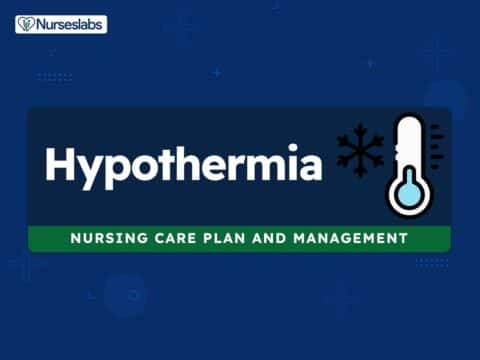

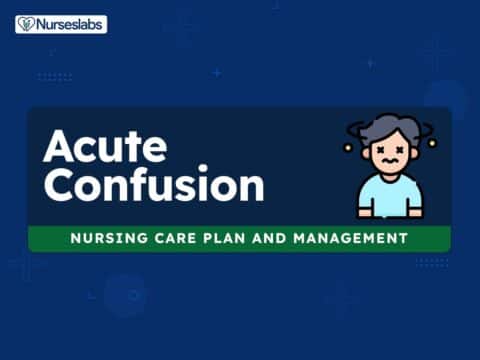
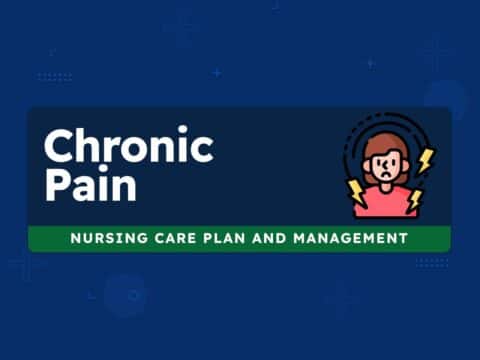



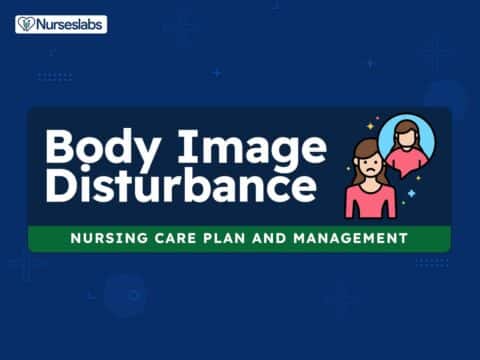

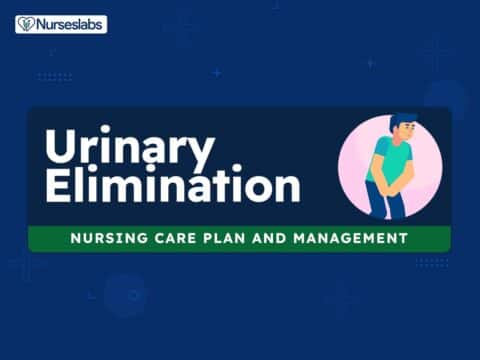


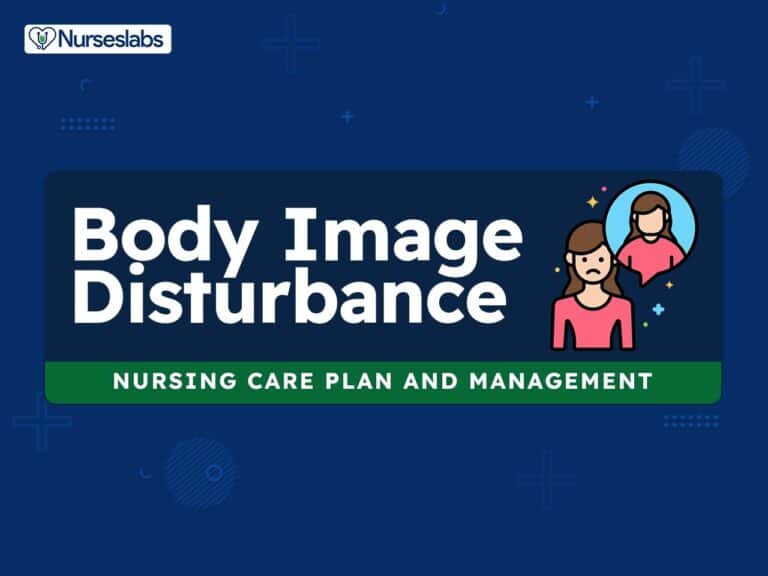




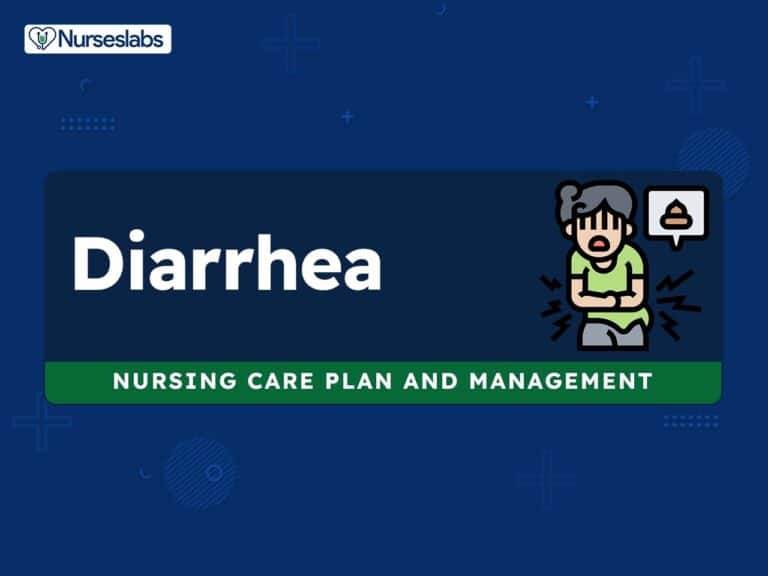
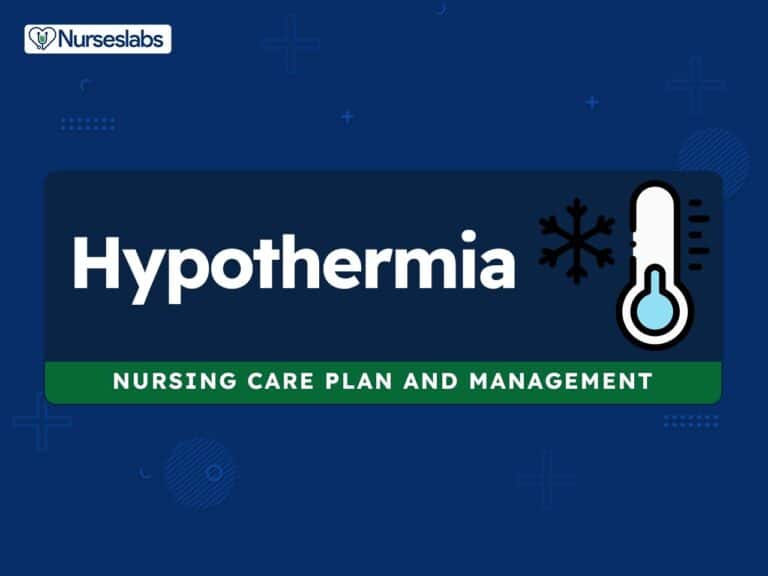
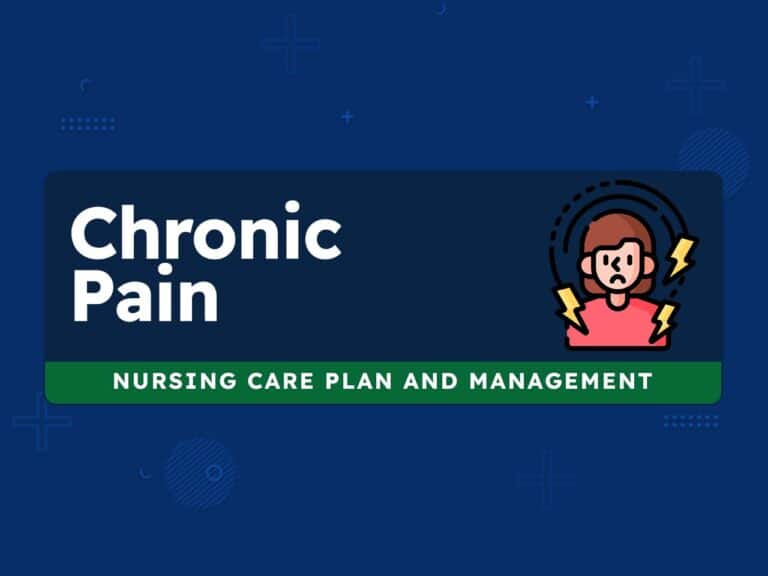


Leave a Comment